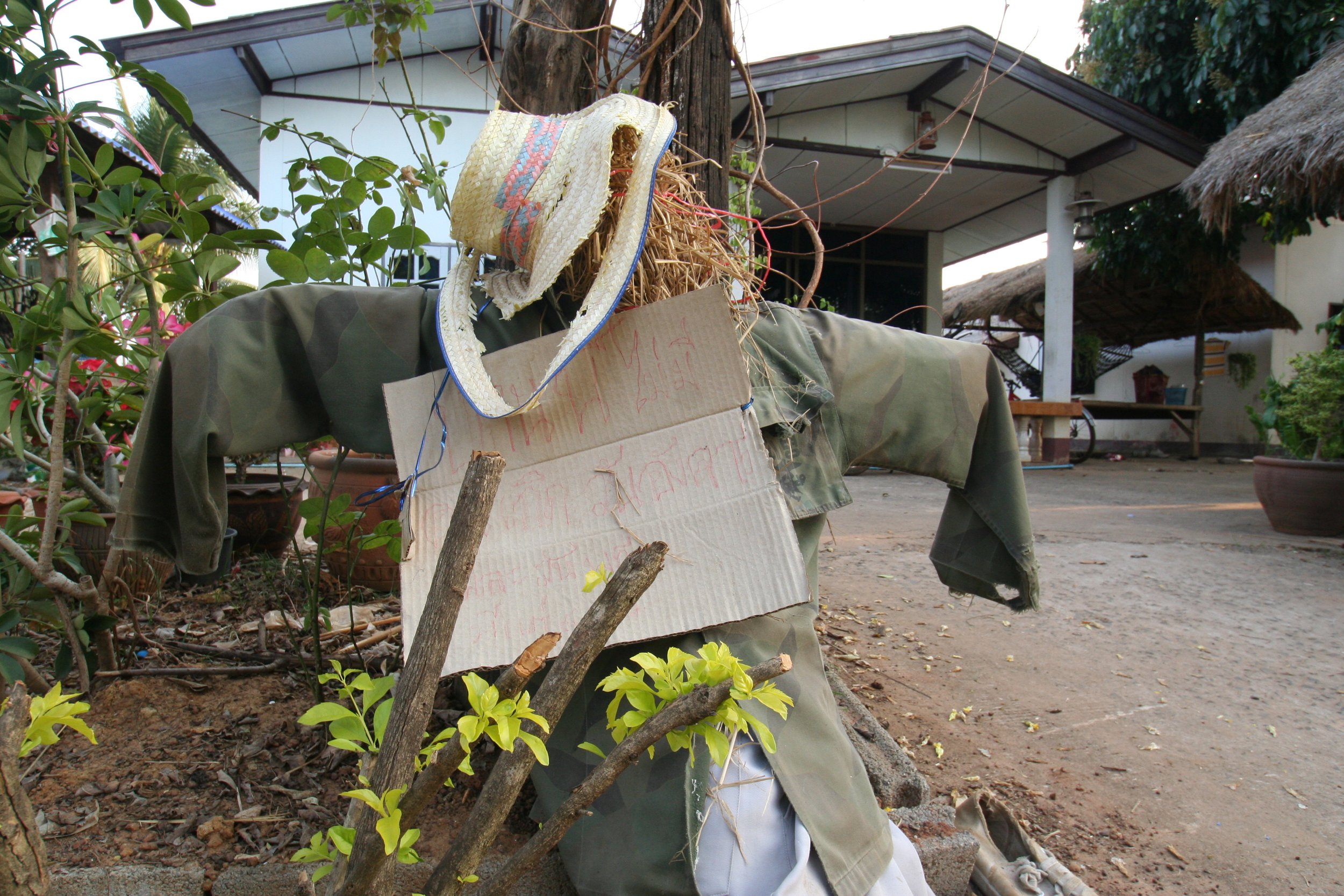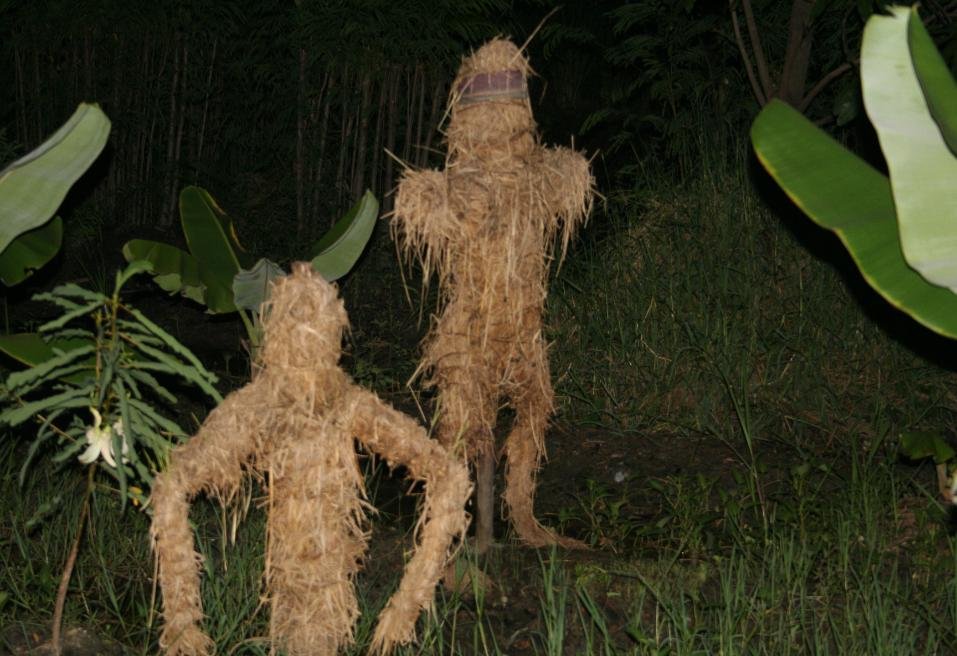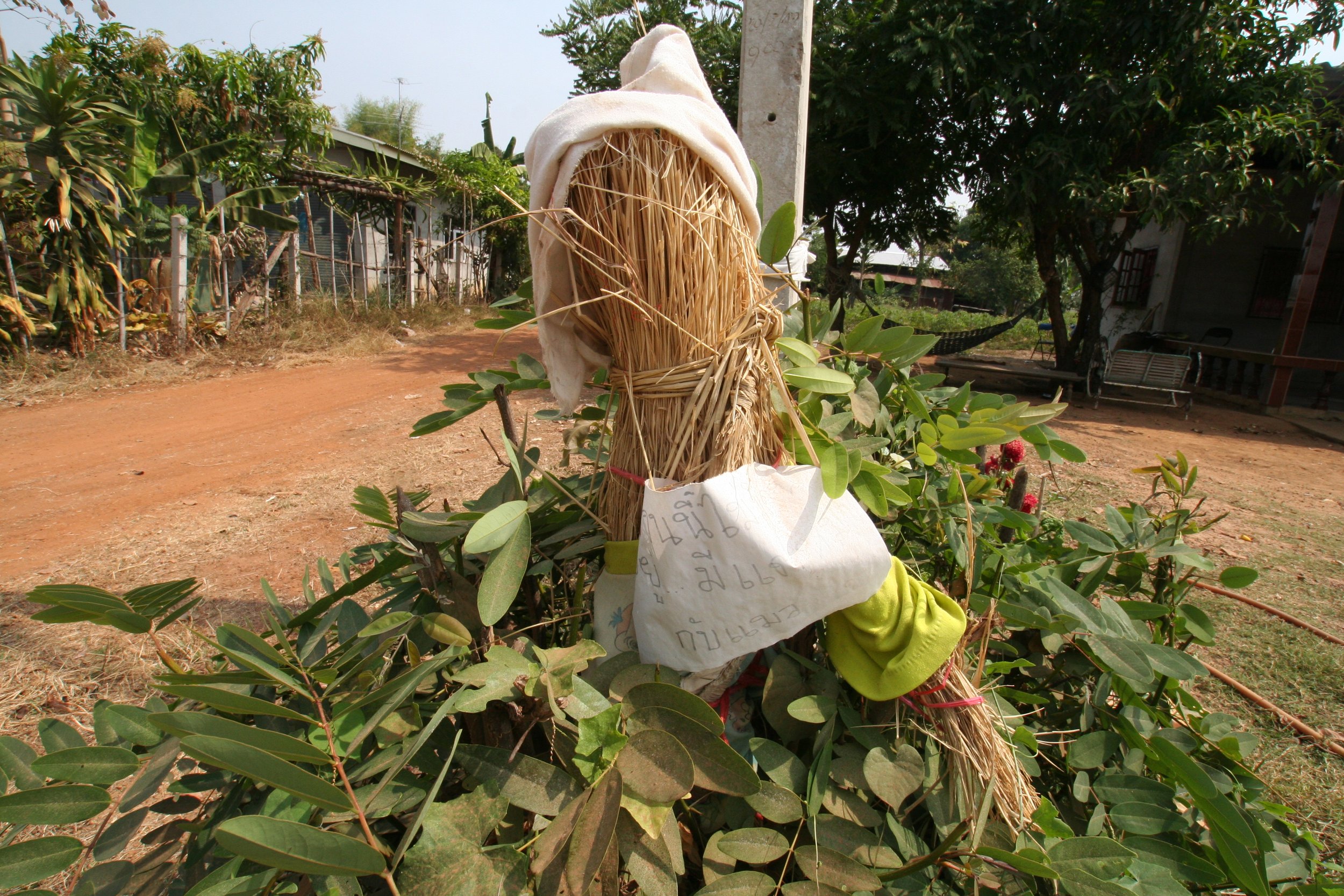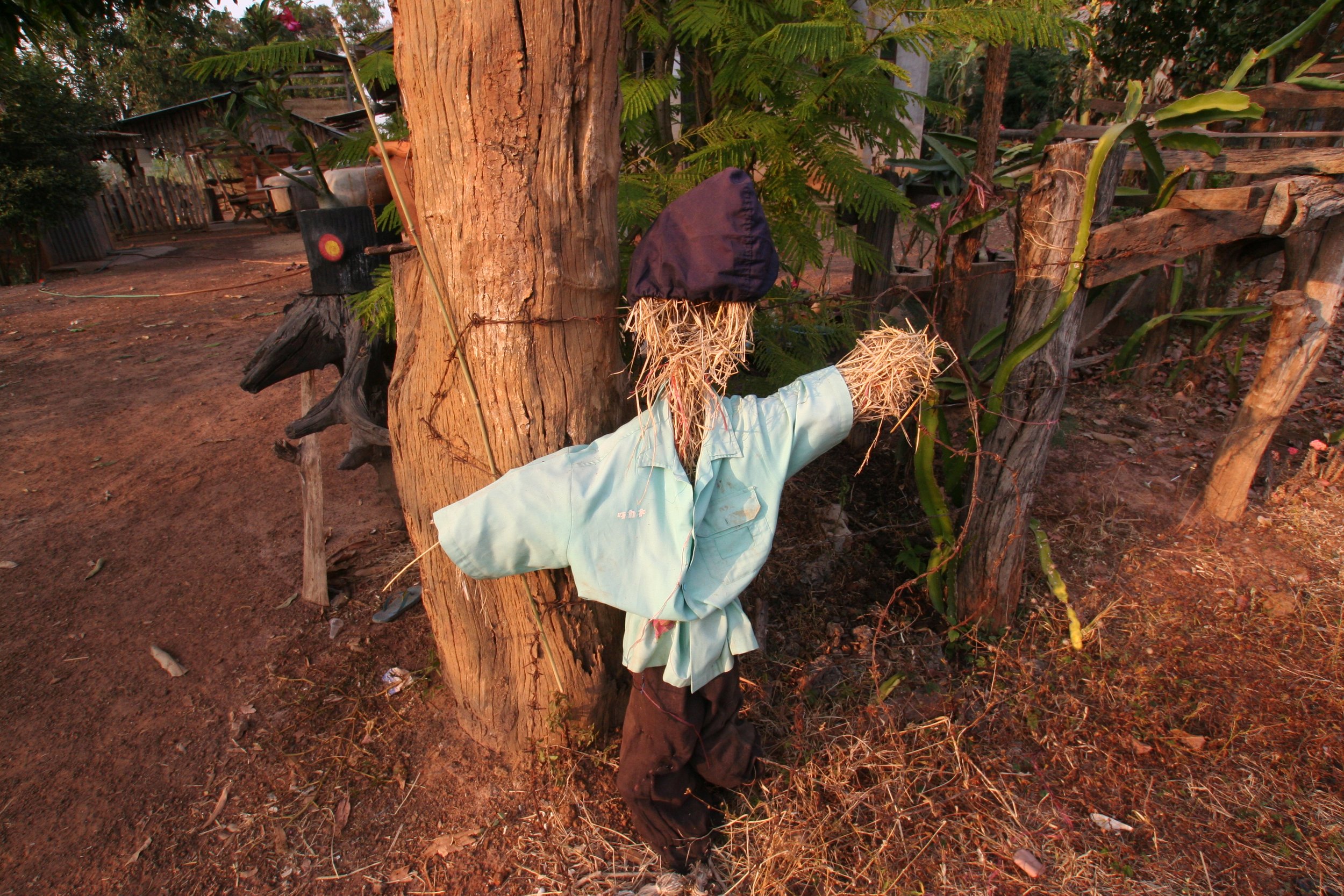Writing and photos: Srisuda Foythongsamrong
Ghost Prevention in Thailand
Nongplong and Kokrak are villages in Isaan, Northeast Thailand. Adjacent to them is Krokkeaw, another village which is slightly larger and similarly has a population of a few hundred people. After one or more villagers died in their sleep in Krokkeaw last month, word spread that ghosts were responsible who favored victims born on a Tuesday (pink) or a Wednesday (green). Thereafter, ghost-aversion scarecrows were set up outside several houses, some with signs posted in Thai with messages to the ghosts, to the effect of “No one inside was born on Tuesday or Wednesday. No humans reside here, only dogs and a bear.” The signs contain lies such as “no humans reside here” or there is “a bear”—the nearest bear is in the Korat Zoo hundreds of kilometers away. Apparently the ghost reads Thai but not their minds, but that does not seem to hinder their practice.
The believers have one foot in pre-modern times and the other in the media-saturated present, yet most striking is how the need to construct the figures spreads by word of mouth and then the scarecrows start popping up from house to house, asserting a form of group cohesion. Within a couple of weeks, forty households had them, each one made of different materials that were found lying around.
The makers don’t consider their scarecrows art, rather they are functional attempts at dislodging scary characters from harming or killing them and their loved ones. This belief system has stubbornly endured for hundreds of years and is still palpably alive in the scarecrows. The community of ghost-averting scarecrows simultaneously works both sides of the mirror—the shared values and solidarity of the community and the spectral ghost sphere, although we should keep in mind that not every household indulges in the practice.
These serious scarecrows originated in Khmer custom, which is still carried on pervasively in the Cambodian countryside. They are made right after the rice harvest to ensure that no evil spirits will inflict spiritual harm. At the end of the cool season they are burned.
The Thai version, practiced mostly by Thais of Khmer extraction living near the Cambodian border, comes about spontaneously when death intervenes in a seemingly unnatural way, and therefore it can be considered a corruption of the Khmer’s seasonal praxis. Moreover, present-day villagers in Nongplong and Krokkeaw are unaware of the custom’s roots in Khmer antiquity.
I am half Thai and half Thai-Khmer, a native of Kokrak now living in Nongplong. I photographed the scarecrows as part of my chronicling of changing village life, which includes a series on betel nut-chewing citizens, weddings, festivals, work patterns, and the mundane life of the farming community.
For the anti-ghost figures I chose mostly a wide-angle lens to exaggerate the qualities, making the ghost averters appear more “ghost-like.” This parallels the Hindu and Buddhist practice of placing scary deities in front of temples. They take the form of evil to repel evil, a cast of mind quite alien to the Judeo-Christian tradition.
I was harassed by a group of tough local thugs in Krokkeaw who accused me of mocking them by photographing the figures, and they forced me to stop. Since they were insistent and aggressive, I went home. But I returned the following day to photograph clandestinely.
My mother, who has lived her whole life in Kokrak, recalls that about once a decade she has seen ghost-averting scarecrows like these, whenever a danger has been perceived from the invisible sphere. To my knowledge, it’s the first time they have ever been photographed. I wonder if it will anger them or assuage their eerie vanity.
Srisuda Foythongsamrong
February 2008
Nongplong, Thailand
---By July 2008 the ghost-avenging scarecrows had all disappeared. Apparently they were effective in preventing deaths.






